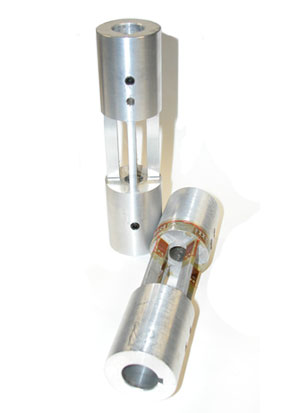Load Cells

Load Cell is the traditional engineering term used to identify the family of instruments for measuring forces and moments. These devices employ a variety of well known configurations to resist the applied force or torque and safely produce a measurable deformation. Prior to the availability of electrical sensors, the deformations were measured by mechanical gages, such as dial indicators. With the availability of electrically resistive strain gages, the mechanical gages were removed and, more importantly, the measurement could be executed remotely. The first electrical strain gages used the Rayleigh Principle of Resistivity to relate the deformation of the gage material to the change of electrical resistance. While these changes are extremely small, the measurements are made using the classic Wheatstone Bridge Circuit. The development of modern sensor materials provides more sensitive piezoresistive strain sensing gages, as well as the direct measurement of dynamic forces through piezoelectric sensors.
We have extensive experience in all aspects of the classic foil resistive strain gages and the newer piezoresistive strain sensors. There are many subtleties in the use of strain gages, including the following:
a) strain distribution versus gage selection,
b) gage sensitivity versus power density,
c) measurement accuracy versus temperature,
d) circuit layout versus accuracy,
...to mention only a few.
When a commercially available load cell will satisfy your measurement needs we will help you make the selection and prepare the installation. However, if you have special needs dictated by your particular application, we can design the strain element, identify the appropriate materials, select the gages, plan the circuit geometry, build and test prototypes and deliver a working system for your needs.